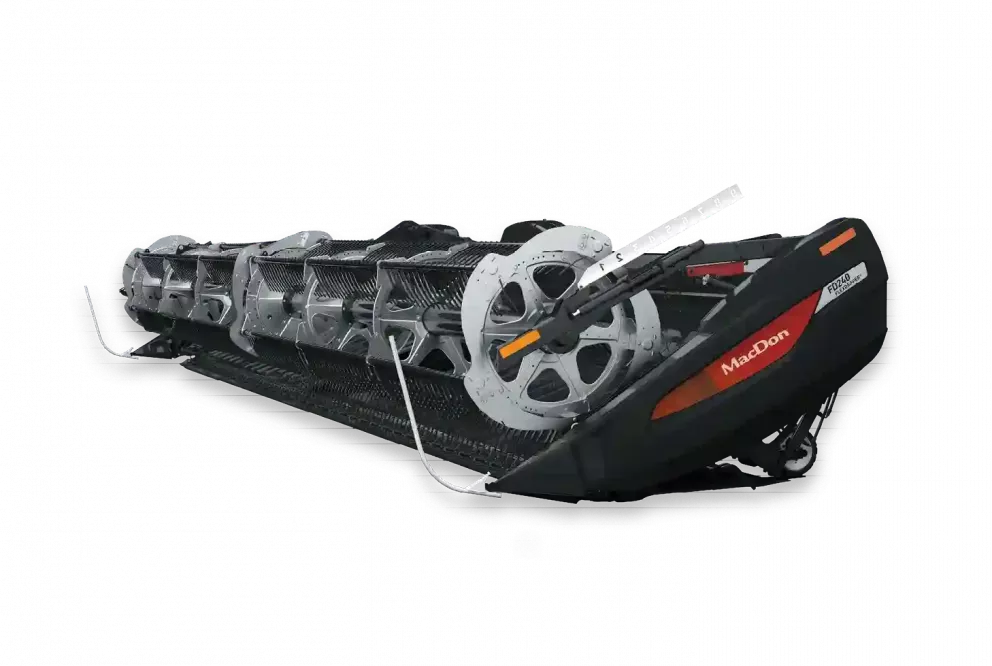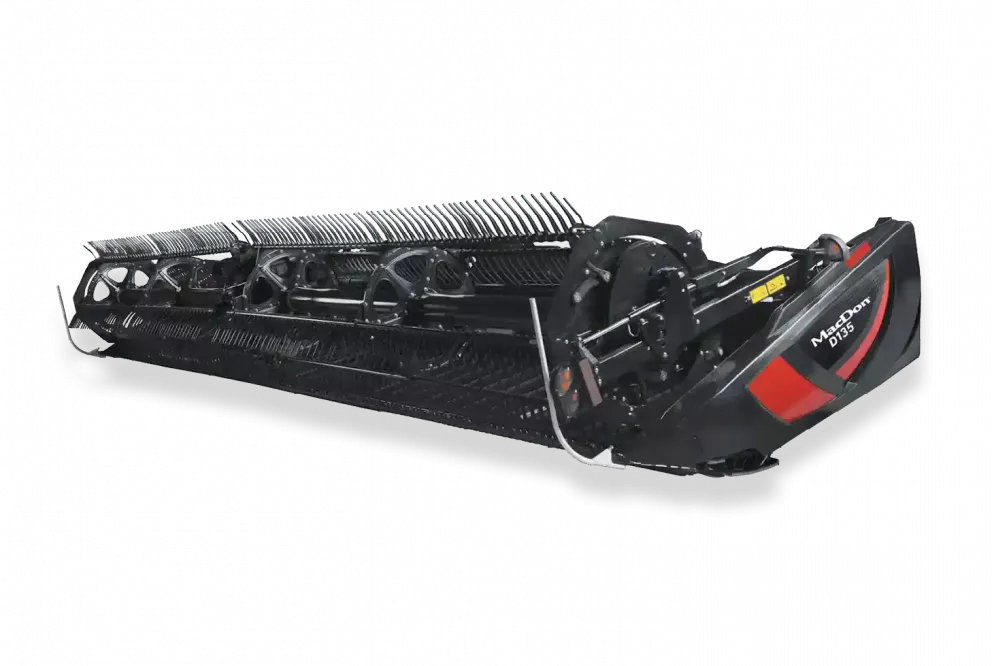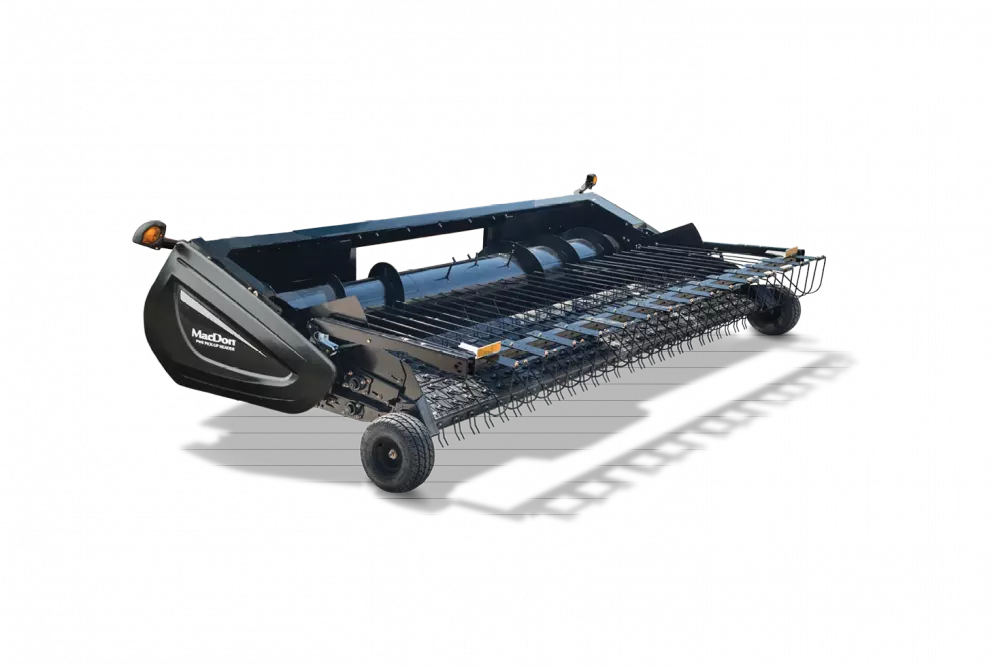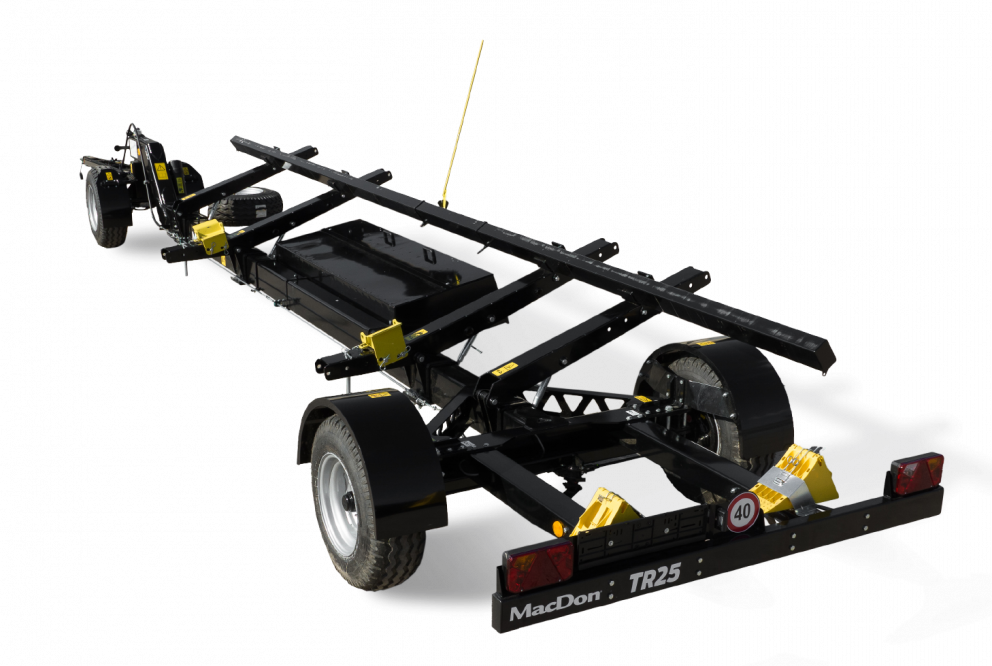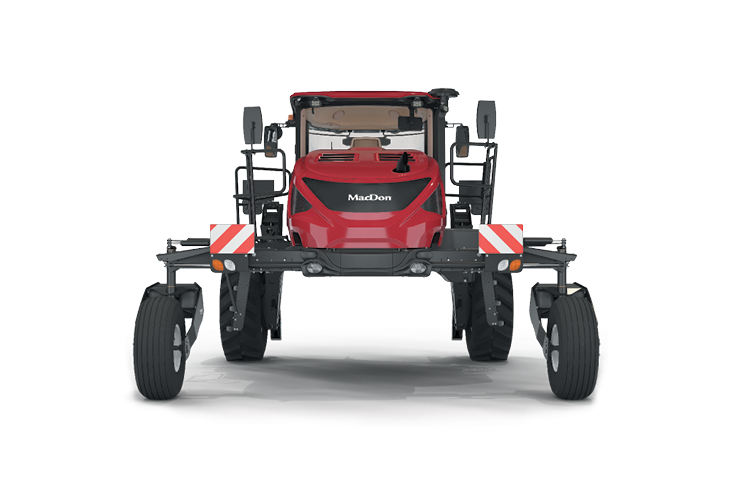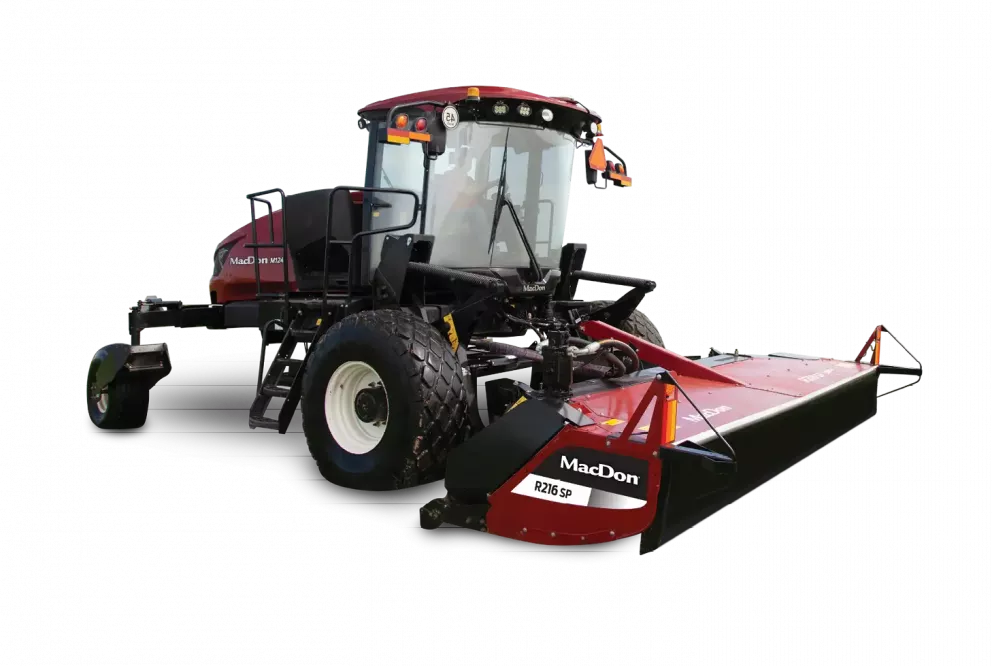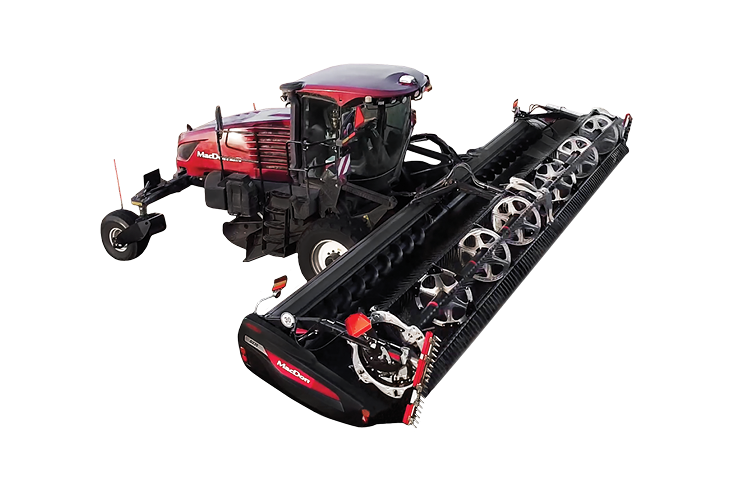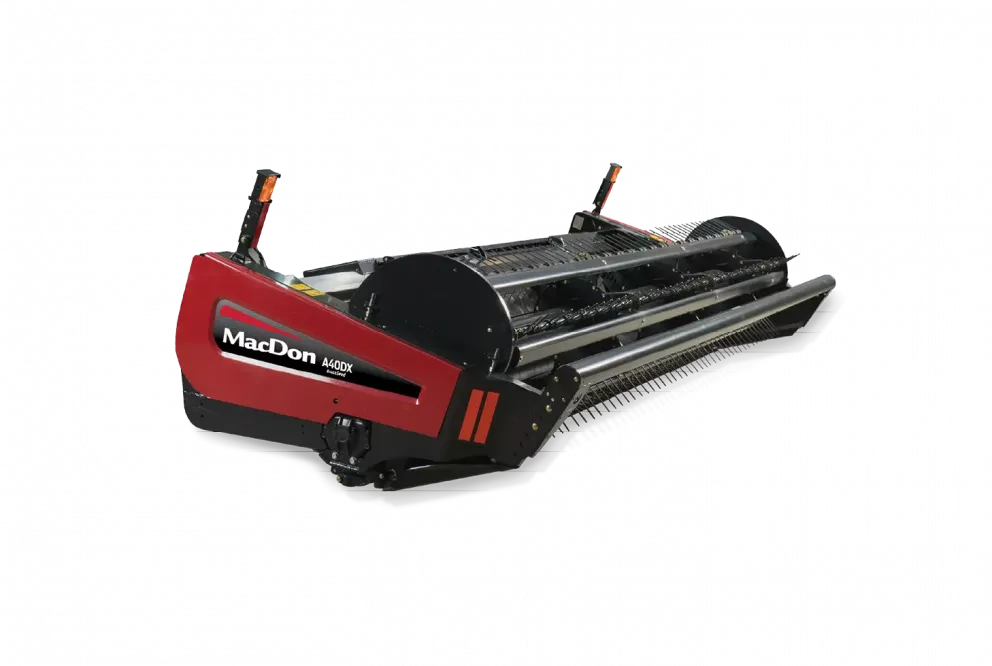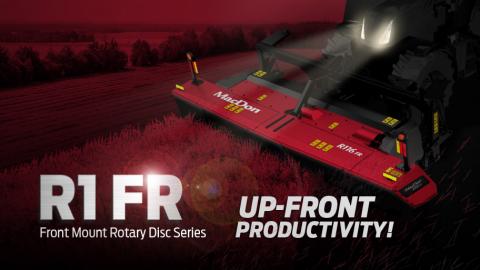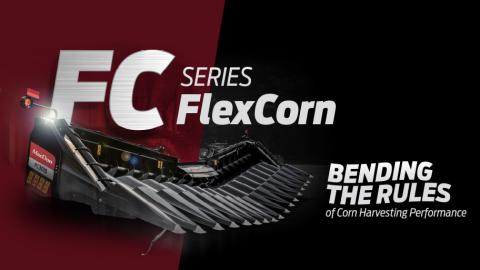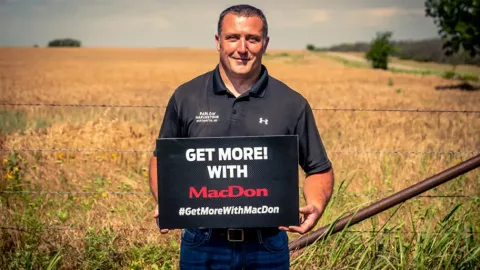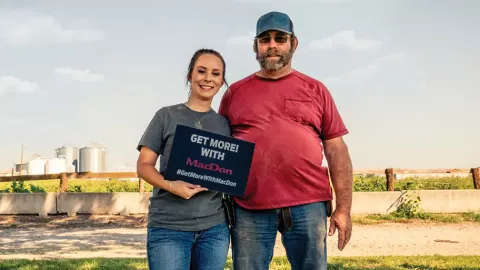The Windrow of Change
With tightening restrictions on glyphosate use, Chris Barron took the leap and purchased a MacDon Windrower. He’s learning that the change was not only necessary, but comes with a load of advantages too.
In a year full of unexpected surprises and challenges owing to the COVID-19 pandemic, it has been relatively smooth sailing for farm manager Chris Barron and his crew at HJ Fairs & Son.
Located in Colchester, in the county of Essex near the south-east coast of England, Barron says the family farm has managed to carry on as normal when it comes to its owned, rented, and contracted farming land, which spans 4900 acres (2000 hectares).
HJ Fairs & Son are unique in the area for a few reasons. First, the farm offers contracts to other growers in the area, as well as in regions to the north and west of them, for borage, echium, and quinoa through “something like a sister company to us, “ Barron explains. Fairking Ltd., a business partnership between HJ Fairs & Son founder, Peter Fairs, and another farm, John K King & Sons, incorporated in 1982 and now specializes in offering buy-back contracts to growers in the UK.
Secondly, in some cases the types of specialty crops they grow, such as camelina, borage (otherwise known as the star flower), quinoa and echium (canary flower), tend to be a rarity in not only the immediate area, but across the UK and have taken decades of work to perfect.
They grow these alternative crops, which mostly end up being used as parts of various pharmaceuticals, because they bring great value in two ways: of course, the product itself, but also the value added by prepping and processing them pre-crush in house.
In addition to the specialty crops, HJ Fairs & Son also grow the more traditional wheat, oilseed rape (canola) and peas.
Though all of these crops are conventionally combined, Barron says, many of them need to be windrowed.
“The borage and the echium, the seeds don’t ever mature all at one time, they mature in stages across the plant, so you’ve got to try and cut it or windrow it at the right point, when there’s the most seed on the plant,” explains Barron, 32.
“It’ll drop the seed on its own, so you have to windrow it so you can hold it in a windrow and let the rest of it ripen, and then you harvest it with a pickup header. If you left it standing and combined it direct, you couldn’t spray it off, and you couldn’t cut direct, it’d be very green and all the seeds would have dropped off the plant.”
To accomplish this, Barron and his team use MacDon’s M155E4 windrower, another feature distinctive to their farm. In fact, it’s one of only two farms in the area running a MacDon windrower, which they added to their fleet in June of 2019.
The previous fall, it became evident that the trio of 20-year-old machines they were using at the time just weren’t cutting it (literally); they were becoming unreliable, and Barron knew the time had come to start looking at newer options.
“We windrow our own, but we also windrow for a lot of our growers as well. We tried to do the contracting with our old machines, but we just found them very, very unreliable and we thought we had to do something about it,” he says.
When he was initially researching the M155E4, Barron was concerned about the width of the machine — roads in the UK can be incredibly narrow, and at more than three meters wide, it was a concern that the MacDon windrower might just be too big to squeeze through. But, he ultimately decided to “bite the bullet” and buy it — and hasn’t looked back since.
“It was quite a jump moving from the machines that we had that were 20 years old, to then jumping to this. It was quite a leap, without being able to use it and try it and see what kind of job it does. It was a bit of a stab in the dark but we went with it and we’re very pleased with it,” Barron says.
Harvesting Performance Note: Following MacDon’s tradition of listening to customers like Chris to create harvesting innovations, MacDon has developed the MacDon M1170nt Windrower. The NT stands for Narrow Transport, allowing this windrower to shift into a narrow transport mode ideal for European roads further boosting productivity.
After conquering the size barrier, every other feature of the windrower became an added bonus, which only further convinced Barron and his team that MacDon was entirely the right choice for them. The control, the comfort of the cab, and the ease that comes with newer technology all top Barron’s list.
“There’s so many more control options in the cab compared to what we had and what we were used to, so there’s a lot more you can do with it to get the windrow,” says Barron.
THE COMFORT OF IT, THE ROAD SPEED, AND BEING ABLE TO TOW THE HEADER BEHIND IT, IT’S QUITE GOOD GETTING IN GATEWAYS.
And the way you made the header trailer with the dolly on it, it follows into gateways really, really well; the ease of just hooking on and off the header from work mode to transport mode is just an absolute ease compared to the old machines that we ran,” Barron says.
The MacDon draper header Barron runs on the windower is the D120, which has been a perfect companion to the M155E4 and offers a myriad of benefits of its own.
“It’s great the way you can tilt the header forwards and backwards, and the active header suspension allowing it to follow the contours whilst still flat on the ground and not building up on the skids, which is a huge benefit compared to our old machine,” says Barron. “We can now swath in wetter ground conditions than we ever could before, which in turn gives us a higher output in some of our specialty crops.”
Barron also praises the tight seal on the draper belts, which does not allow trash to get under the belts, and the fact there’s easy access to the belts if he does need to clean them out. In addition, the reel is “fantastic,” as it can perform in any condition and lift very flat crops.
When thinking about how farming might change in the next five to ten years, Barron predicts the practice of windrowing to only become more and more popular in his area as glyphosate restrictions and bans, which includes products such as Roundup, are phased in all over the world.
Glyphosate is the most widely used herbicide in the UK; according to a study from Oxford Economics, 5.4 million acres (2.2 million hectares) of land were treated with glyphosate annually in 2014. But concerns have been raised and conflicting studies have been published as to the possibility of the herbicide being carcinogenic to humans, and in 2016, a YouGov survey of more than 7000 people in the European Union’s five biggest states, including the UK, showed majority support for banning the chemical.
And while the ban of glyphosate could mean many things from an economic perspective, it most certainly means many farmers will have no choice but to get back to basics when it comes to some of their harvesting practices.
“Glyphosate has only got a matter of time before that’s going to be banned. A lot of people use pre-harvest glyphosate just to kill the crops off to get in there a bit earlier, so chemicals are getting less and less so I think, as time goes on, people are going to resort back down the windrowing route because they haven’t got much choice,” Barron says.
“We’ve found you can get in there a lot sooner and it thrashes a lot easier in the combine. People are spraying theirs off around us, they get in after three weeks where we’re about ten days and it’s still bunging their combines up, so I think that will change and people will go back to how they used to do it and windrow it.
“That’s why we’re pushing for the second windrower now, get a bit more work out there, because we can see the future is going that way and hope that we’re there first and the service is there so people will come to us,” Barron says.
And for those in the market, those who notice the same trends and expect the same drastic changes Barron sees coming down the pipe, he would unreservedly recommend a MacDon for anyone who predicts windrowing will be a substantial part of the success of their farming future.
“A hundred per cent I would recommend it, but just not too much because I don’t want to lose business around our area.” Barron laughs.
“But no, definitely, because there are still a lot of the 20-year old machines about and they just cut their rape with it every year, 100 acres or something like that. The difference between one and the other is just night and day, it’s a completely different machine to drive,” he says, adding his experience with MacDon customer service has also been exceptional.
And, for the true cherry on the performance cake, Barron notes customers too have noticed a positive difference in the quality of cut since HJ Fairs & Son introduced the M155E4 to their lineup.
WE WANT TO CUT VERY, VERY CLOSE TO THE GROUND AND THE DIFFERENCE THAT THIS MACHINE MAKES BECAUSE OF THE EXTENSION ON THE ACTUAL HEADER, HOW IT PIVOTS, AND THE PLASTIC SKIDS THAT DON’T DRIVE THE SOIL, WE CAN GET SO MUCH CLOSER TO THE GROUND AND DO A MUCH BETTER JOB, ALL THE CUSTOMERS ARE VERY HAPPY WITH THE MACDON COMPARED TO WHAT WE WERE DOING BEFORE FOR THEM, SAYS BARRON.
“It’s been a hit all the way through, really, for everyone.”
